Diplomacy, or Mandeville, is a genus of vines of the Kutrov family. Homeland plants are the American tropics. The flowers were brought to Europe by the British, who worked in Bolivia and drew attention to the unusual flowering vines. The plant can also be found under the name Chilean Jasmine, Brazilian Jasmine, Brazilian Balsam, Bolivian Rose, Mexican Tree of Love. Florists are attracted by the rapid growth and prolonged flowering of diplladation.
Care for dipladenia at home involves 2 modes: the growing season and stagnation, which differ significantly from each other. Subject to all the rules and recommendations for growing a flower, there will be no trouble with it.
Content
Plant characteristics and species diversity
Diplomacy is an evergreen perennial. Flexible curly stems lignify over time. They are oppositely located bright green leathery castings. The shape of the plates is oval, the surface is glossy. At the break, leaves and stems give poisonous milky juice.
Flowers are represented by a five-petalled funnel. Color can be white, pink, red, burgundy. The flowers are quite large - their diameter reaches 10 cm. Up to 80 buds can bloom on one plant at a time.
Mandeville Shiny has the following features:
- Large size.
- On the young shoots there is an edge.
- A flower brush consists of 3 or 6 inflorescences.
The brilliant-looking flower has a two-tone tube: white on the outside and bright orange on the inside. Petals are painted in deep pink.
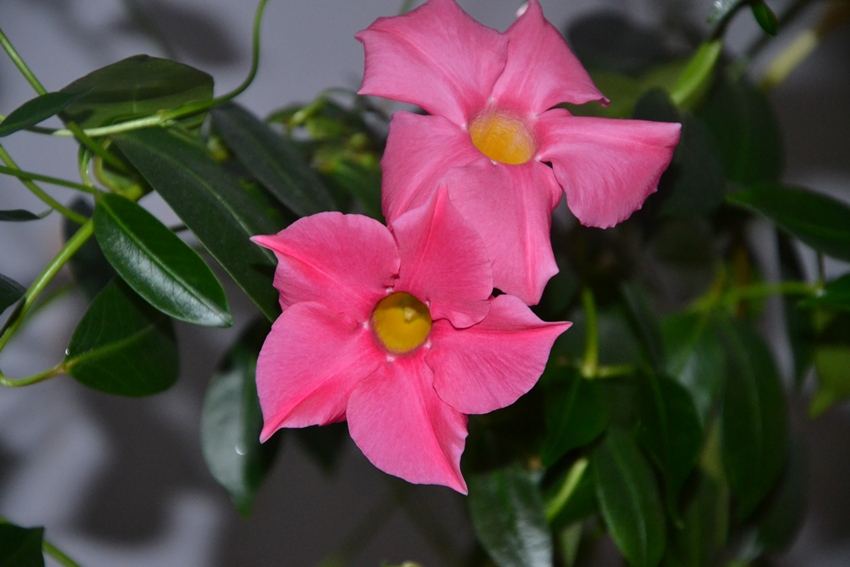
For Mandeville of Bolivia, the following features are characteristic:
- Elongated shoots with small leaves.
- Axillary peduncles with 3-4 flowers.
The flowers of the Bolivian species differ in asymmetric petals. Depending on the variety, they may have a white or pale pink shade.
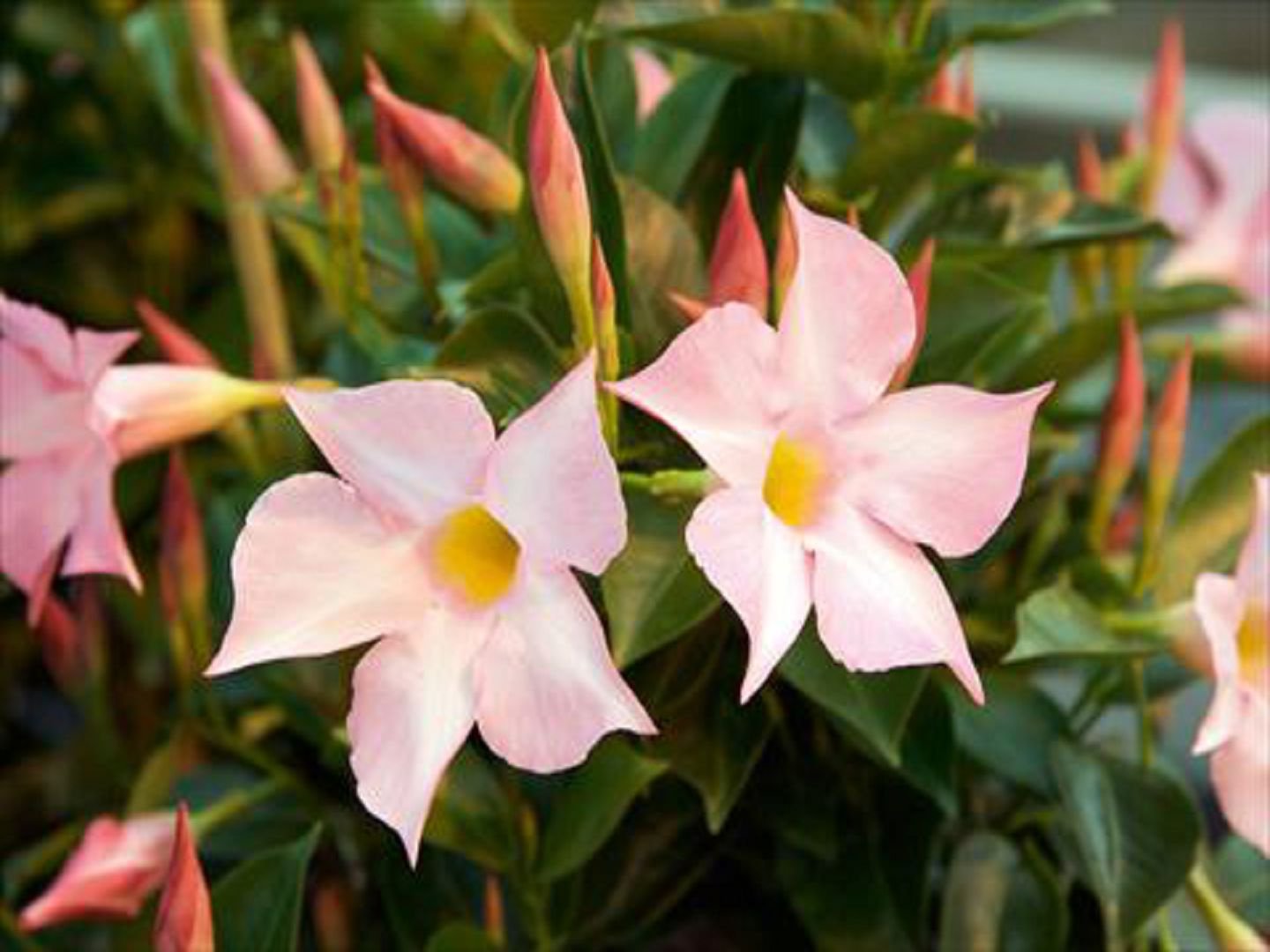
Mandeville the Excellent is distinguished by reddish shoots. Flowers of this species most often have a bright red color, but there are pink hybrids. Flowers are harvested by racemose inflorescences. In one inflorescence, about 8 small flowers are placed.

The Sander’s diplomacy is characterized by its ability to rapidly grow. Sinuous racemose inflorescences hold up to 7 bright pink, almost red flowers. The petals of this species are distinguished by an unusually sharp edge.
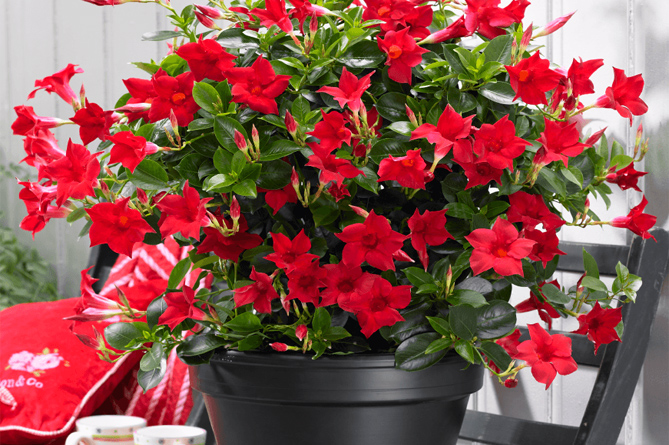
Mandeville Rihlaya is distinguished by such features:
- Warty shoots.
- Edge on the inside of the leaves.
- Large white-cream flowers, collected in 5-6 pieces. in one inflorescence.
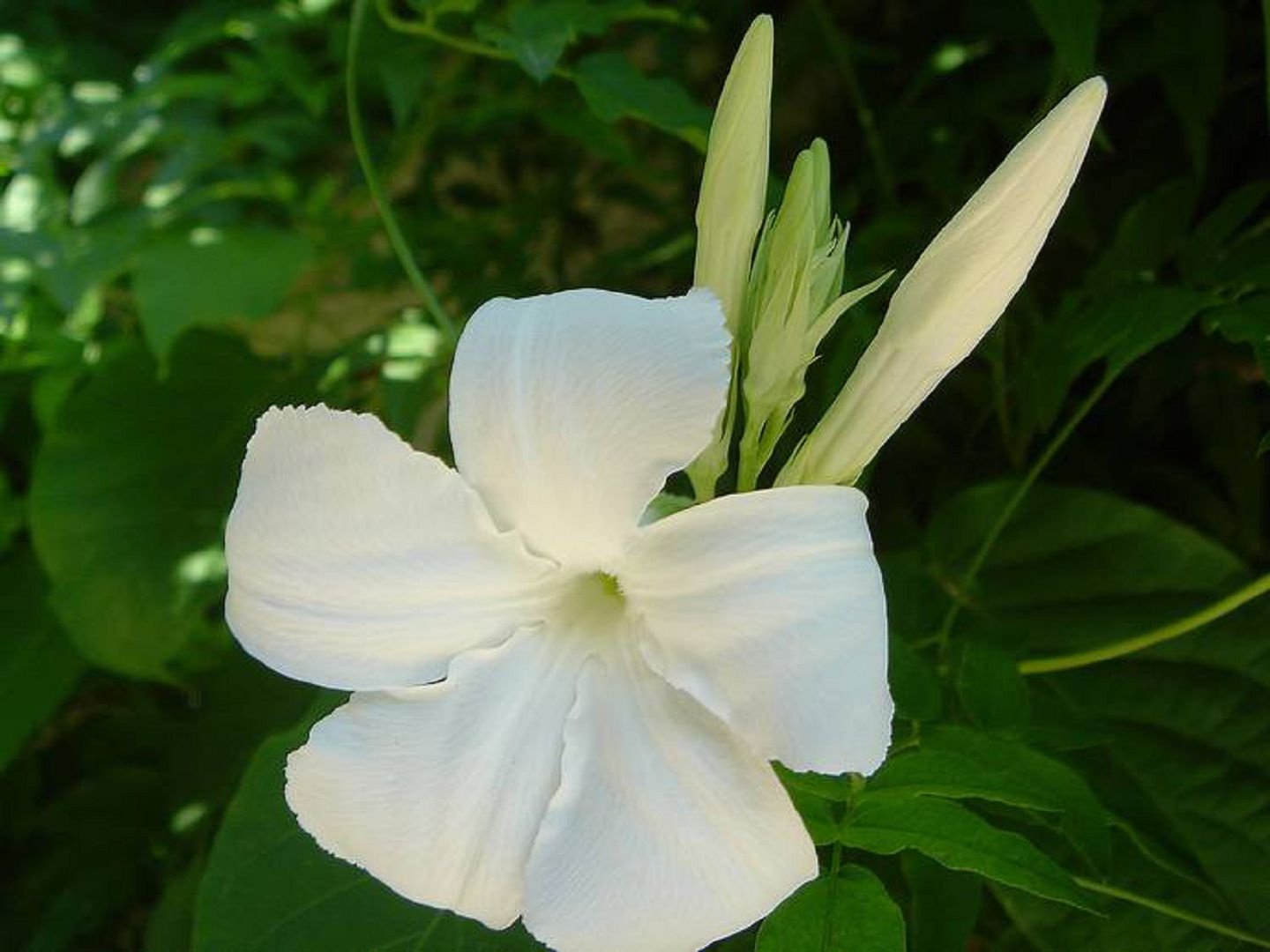
Unlike other types of diplladation, Loose Mandeville annually drops leaves.
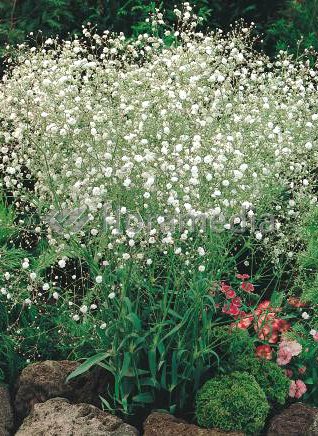 You may be interested in:
You may be interested in:Rules for the care of dipladenia at home
It’s easy and pleasant to take care of diplomacy. But you need to do this with gloves, because the juice of the plant is very toxic.
Lighting
Diplladation requires a lot of bright diffused light.During the period of active growth, the optimal daylight hours for the plant are 14-16 hours.
On the south side, growing mandeville can be difficult. Active sun can leave burns on the leaves of the plant. Therefore, the flower is either shaded with a translucent curtain, or placed next to the window. Cultivation of diplomacy on the north side is possible only under the condition of additional lighting with phytolamps. Otherwise, the plant will begin to stretch the stems and form an order of magnitude smaller buds.
Temperature and humidity
During the growing season, the flower is kept in temperature from + 18 ° С to + 25 ° С. The higher the air temperature, the brighter and more saturated the color of the diplladation petals. The duration of flowering depends on temperature. If the room where the flower is located is constantly maintained at + 25 ° С, diplomatic operations will bloom all year round.
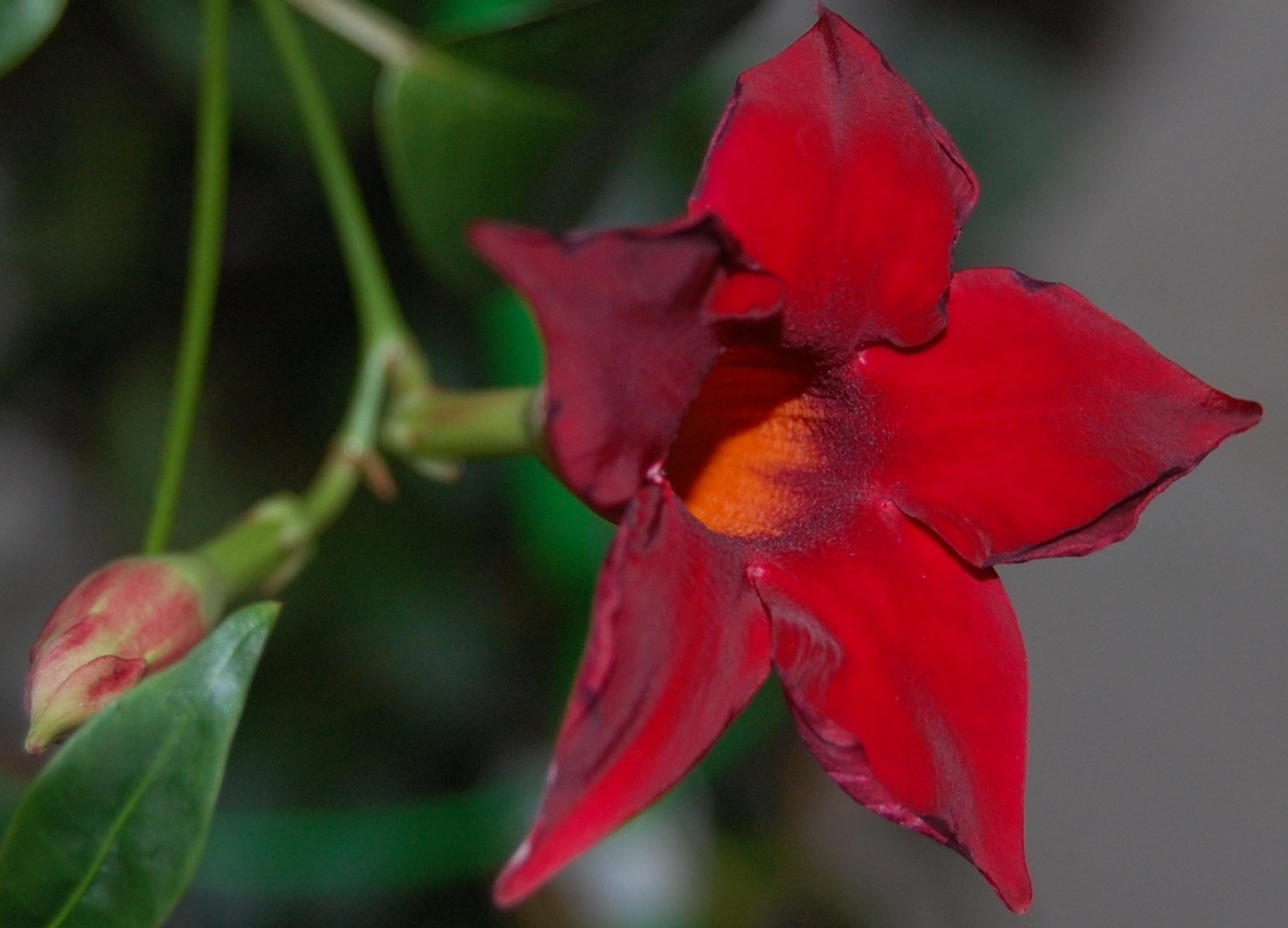
Due to the fact that the flower is home to the tropics, it needs to provide a high level of humidity. For this, during the period of active growth, the flower is constantly sprayed. It is best to send a humidifier to the pot. If there is no such device in the house, you can put a container of water for evaporation behind the pot.
Watering and feeding
Watering the mandevilla during the growing season should be as the top layer of the soil dries. Between watering, the ground should dry by 1-1.5 cm. Usually, the frequency of watering is 2-3 times a week, but in hot weather you will need to water the plant every 2 days.

The plant needs fertilizer. It is introduced every week from March to August. It is better to use liquid mineral complexes for indoor plants, which are introduced during irrigation, to feed the diplomatic plant.
At the beginning of the growing season, it is preferable to use fertilizers with a high concentration of nitrogen, which "works" to build green mass. As soon as budding begins in diplomacy, nitrogen fertilizers are replaced by potash and phosphorus fertilizers, which contribute to flowering.
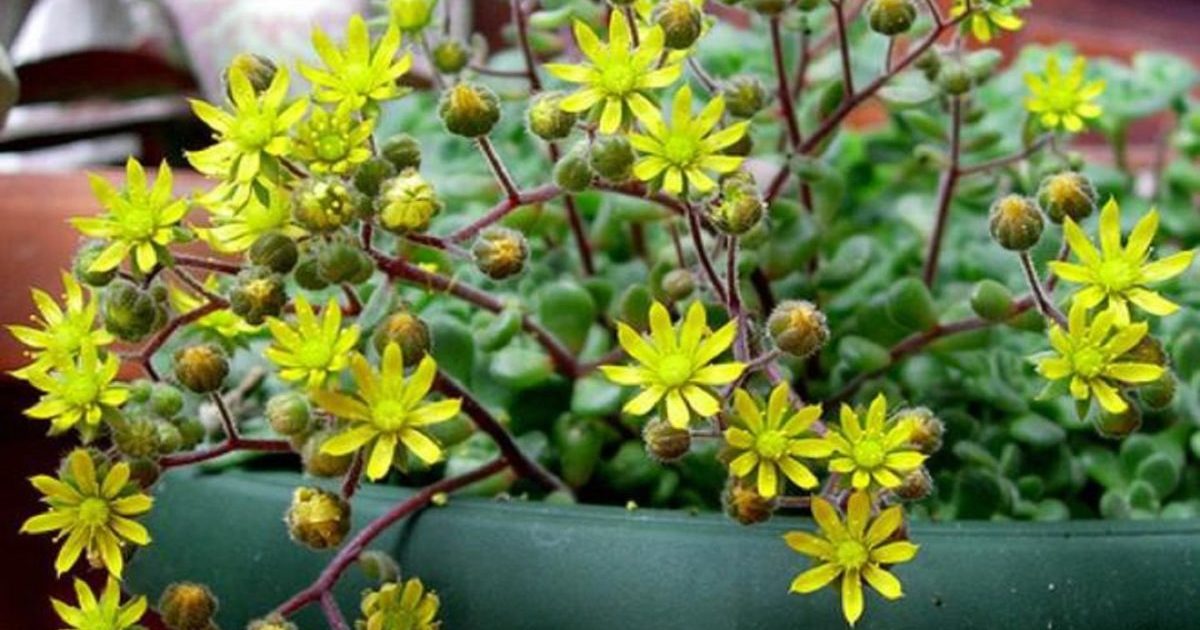 You may be interested in:
You may be interested in:Winter Dipladenia Care
The period of rest in diplomacy is weakly expressed. It occurs in the winter, but they begin to prepare the flower for stagnation from the end of August.
Caring for dipladenia in winter involves such actions:
- Temperature. In winter, the temperature is gradually reduced to + 15 ° C.
- The location. So that the mandeville does not freeze, it is placed with the pot in a foam box.
- Watering. The flower is watered no more than 1 time per week in small portions of water.
- Feeding.
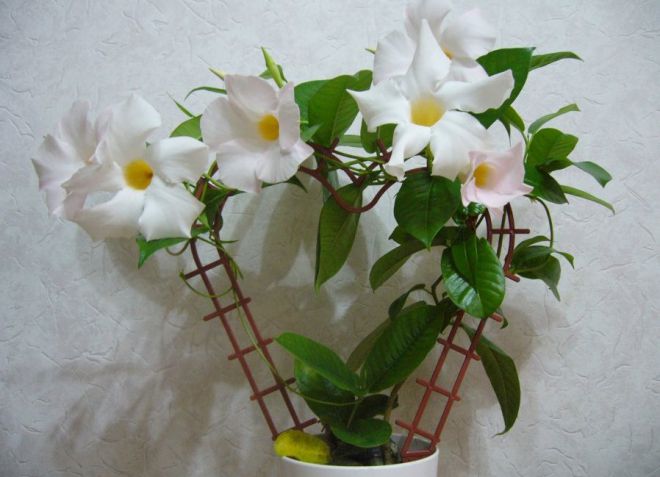
During stagnation, mandeville is not fertilized. - Pruning. In the fall, the plant is performed anti-aging pruning. All old shoots are subject to removal. Young stems are shortened by 2/3 of the length.
- Air humidity. During dormancy, diplading does not require increased humidity, so spraying is stopped for this period. But the air should not be too dry, so the plant should be kept away from heating appliances.
- Transfer. During rest, the flower can not be transplanted.
What does it mean if the leaves turn yellow or fall
If the leaves turn yellow and fall off the mandeville, it must be urgently isolated from other indoor crops. Such symptoms may indicate a flower disease or infection by pests.
Pests and control methods
Such harmful insects as whiteflies and spider mites cause great damage to the plant. You can determine the infection with these pests by the following signs:
- Whitefly It is clearly visible against the background of green leaves. These are small white midges the size of a larva. Whiteflies can hit a flower while airing on the street. All ground parts of the plant should be thoroughly washed under running water. If infection could not be avoided, it is necessary to treat the flower with an insecticidal preparation.
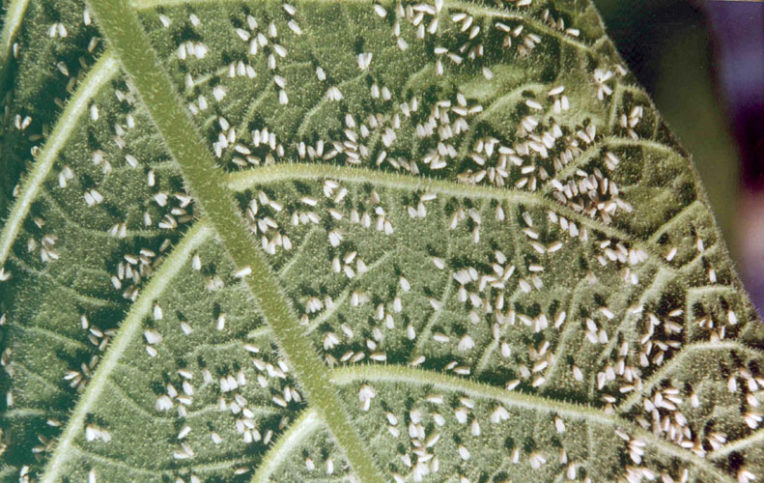
Whitefly - Spider mite. The tick itself is almost impossible to notice, but the product of its activity - a thin cobweb, is clearly visible. As a rule, a tick entangles it with the wrong side of leaves and petiole. A spider mite appears in conditions of dry air. It can be eliminated only with the help of an insecticide.
Disease and treatment
Most often, mandeville is affected by root rot and powdery mildew. Root rot occurs due to waterlogging of the soil and stagnation of moisture in the pan of the pot. The disease is manifested by yellowing and drying of the leaves, stems of the plant. The buds of the affected flower show off without opening. The roots of the plant rot. You can get rid of rot in the early stages of its development. First, all the affected parts are given from the plant, then it is treated several times with fungicide.
Powdery mildew is an equally unpleasant disease. It manifests itself in a white powdery coating, over time covering the entire surface of the leaves. In the early stages of the disease, experienced gardeners are advised to wipe the affected leaves with lemon juice. If this does not help, you need to fight the disease with fungicides.
Reproduction and transplantation
A flower propagates in three ways: cuttings, seeds, and a mustache. The most popular way is to cuttings.
Landing and transplanting
For diplomacy, a fertile, loose, moderately acidic substrate is needed. Experts recommend preparing such a mixture for the flower:
- turf land - 2 parts;
- sheet land - 1 part;
- humus - 1 part;
- sand (perlite, vermiculite) - 1 part.
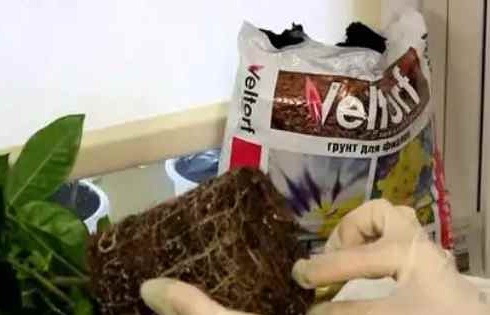
It is better to plant and transplant diplladation in the spring. At this time, the plant begins a new vegetative turn. A transplant is carried out exclusively when the flower becomes crowded in an old pot. This can be determined by protruding roots from the drainage holes. If the plant is comfortable enough in the pot, they simply change the top ball of soil annually.
Propagation by cuttings
Propagation of the propagation of cuttings by cuttings involves several stages. Cherenkov's algorithm:
- Part of the shoot with 2-3 leaves is cut from an adult plant. It is advisable to choose young shoots.
- The capacity for rooting cuttings is filled with a mixture of peat and sand, taken in equal proportions. Here you can add a little moss.
- Cuttings are deepened to the first pair of leaves.
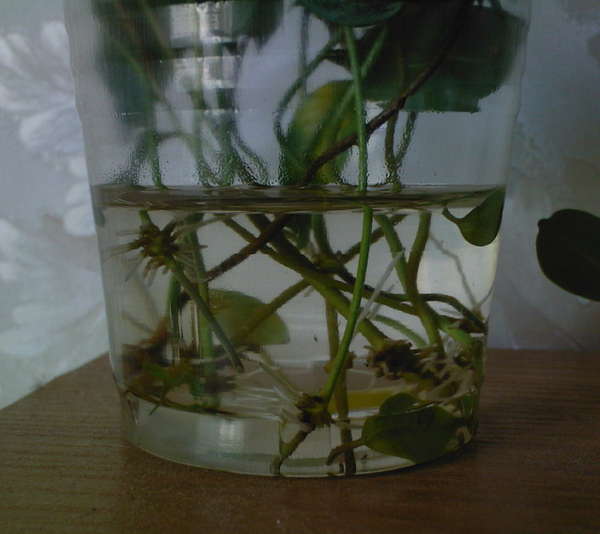
For successful rooting, a temperature of + 25 ° C is required. The soil is sprayed daily. When a couple of new leaves appear on the cuttings, they are transplanted into the usual soil for diplopladation. The cuttings are best carried out in mid-spring - early summer. Such layering is more likely to root.
Propagation by seeds and mustache
Diplomacy is removed from the seeds in a certain way. Breeding procedure:
- Seeds are sown in a container with fertile moist soil.
- The container is covered with polyethylene.
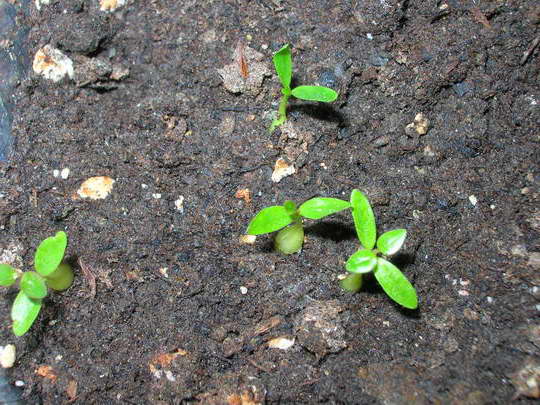
Seeds germinate in a warm place with bright light. Every day they need to be aired and sprayed. When the first leaves appear on the sprouts, they are dived. Growing conditions are similar to those for caring for cuttings.
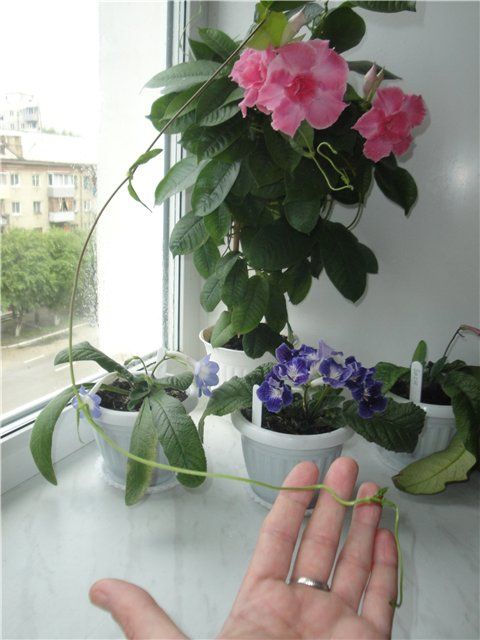
You can propagate diplomacy with a mustache. It is rooted in the soil so that the base remains on the mother bush, and the tip is in the air. Whisker care is no different than standard dipladenia care. After rooting, it is cut off from the mother plant.
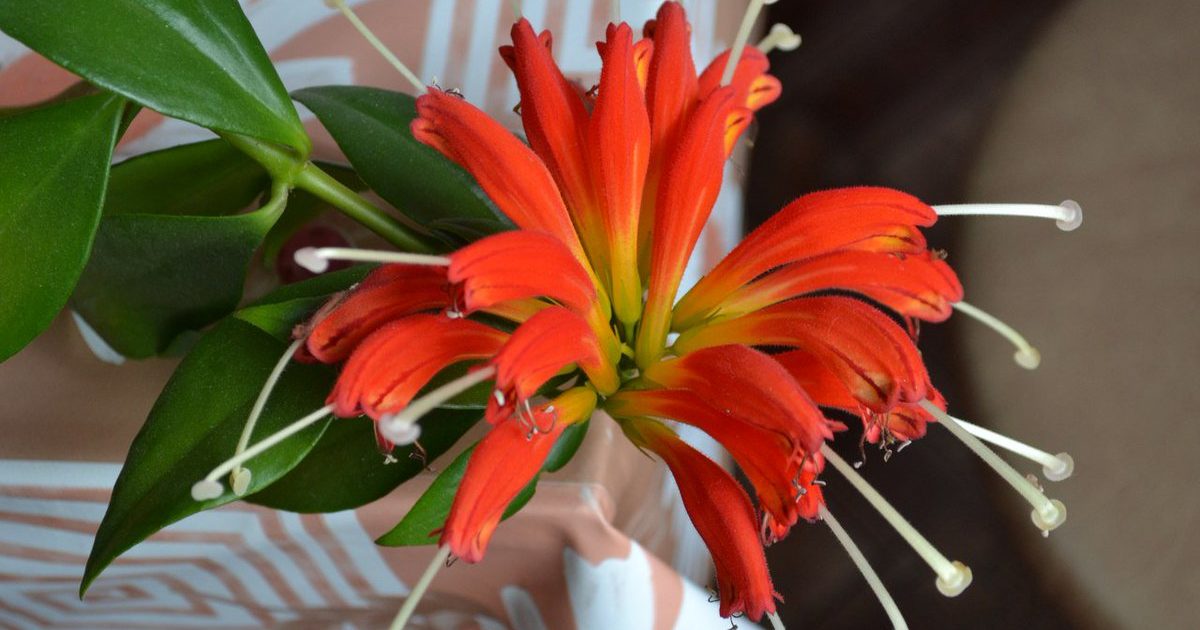 You may be interested in:
You may be interested in:Common Growing Questions
Diplomacy is a beautifully flowering decorative vine. Caring for it is not burdensome, but the grower should be careful, since the juice of the vine is very toxic.

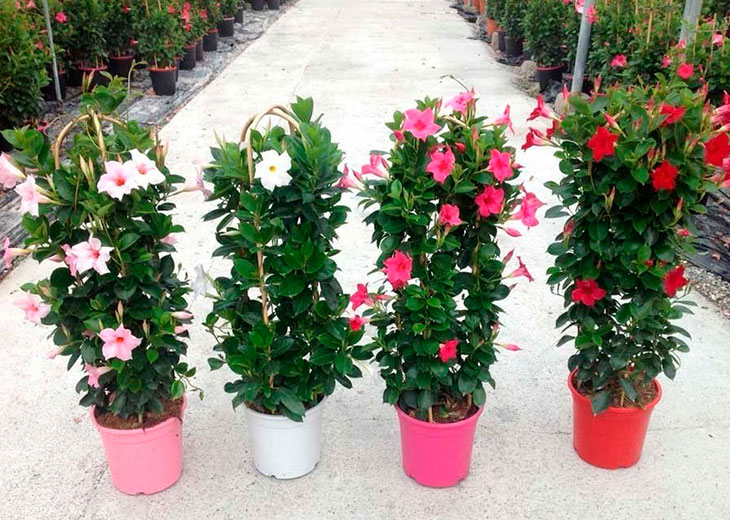

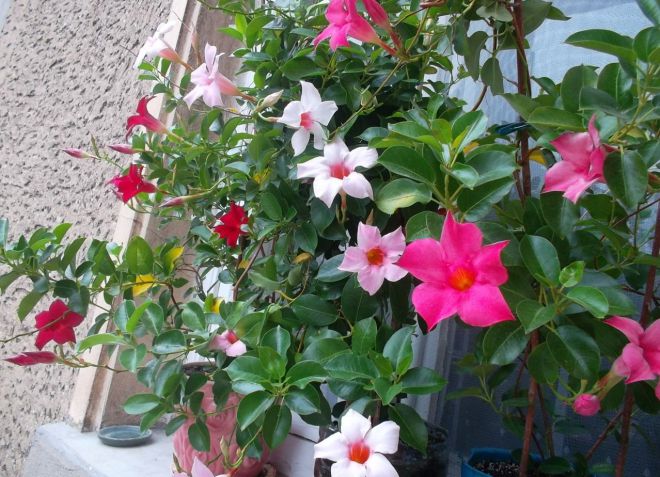



 10 beautiful annuals that bloom all summer
10 beautiful annuals that bloom all summer Sow in the ground, without seedlings: 10 beautiful and unpretentious flowers
Sow in the ground, without seedlings: 10 beautiful and unpretentious flowers Platicodon planting and outdoor care
Platicodon planting and outdoor care Hosta - planting and care in the open ground in the Urals
Hosta - planting and care in the open ground in the Urals